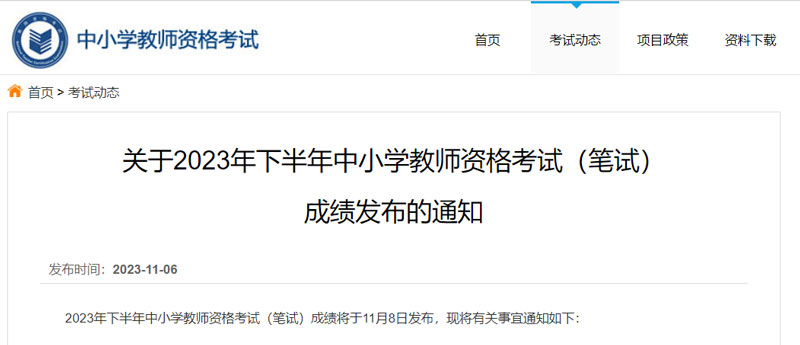[摘要] 建筑论文: 融合风水理论的生态建筑设计研究由硕士毕业论文中心,硕
建筑论文: 融合风水理论的生态建筑设计研究由硕士毕业论文中心,硕士论文组整理提供,本文阐述了融合风水理论的生态建筑设计研究
【摘要】 中国目前正处在一个高速发展的时期,建筑行业发展迅速,因此要实现可持续发展,必须实现建筑行业的生态化转型。中国传统风水理论,长期处于大众科学和建筑学关注的热点领域之外,但它却是中国本土的生态建筑思想沃土之一。本文通过风水理论和生态建筑相关要素的对比,把传统风水理论的相关科学原则融入到当今的生态建筑设计体系当中,寻找一条适合中国特色的可持续生态建筑发展道路。本文的第一章主要概述一些研究背景、研究现状、研究范围、研究方法。第二章首先阐述生态建筑相关理论——生态建筑理论的发展过程、生态建筑的定义和设计原则、生态建筑的适宜性技术;然后介绍传统风水相关理论、传统风水理论的发展过程、原型的现代意义和特点;最后,从理论上概括比较了场地选址、人文文脉、单体造型三大方面,为接下来的研究奠定了理论基础。第三章对生态建筑设计和风水理论相关要素进行分析,主要通过生态建筑场地设计要素和风水选址要素、生态建筑人文设计和风水人文要素、生态建筑单体设计要素和风水单体要素间的对比分析来阐述。第四章则通过对川蜀阆中古城、湘北张谷英村、皖南宏村、东海南岙村四个不同地区的聚落,分析传统风水建设中具有现代生态意义的原则措施。第五章则是结合理论和单项比较分析的结果,以生态建筑设计相关原则为基础,融合传统风水手段,从相互有关联的各个目标方面提出适应中国适宜性生态风水建筑的建设原则。最后,针对全文提出结论。本文通过以上研究,为建筑师参与设计生态建筑提供适合的地域化的设计提供可供选择的策略,并在建设活动中融合传统风水理论以帮助生态建筑的实现。 更多还原
【Abstract】 China is developing very fast, so as its construction industry. Therefore, we must realize the ecologization transformation of the construction industry so as to achieve sustainable development. The traditional Chinese Feng-Shui theories, which are out of the hot areas concerning public science and architecture, are actually a rich land of native Chinese ecological construction ideology. On the basis of the comparison between the elements of Feng-Shui theories and ecological architecture, this paper tries to find a way of sustainable ecological devolvement with Chinese characteristics by integrating the related scientific principles in traditional Feng-Shui into ecological architecture design system.The first chapter summarizes the background, current situations, areas and methods of the research. The second chapter deals with the related theories, that is, the developing process, the definition and design principles as well as the applicable technology of ecological architecture. And in the second chapter, there is an introduction to the related theories, developing process, significance and feature of the traditional Feng-Shui theories. Finally, it summaries and makes a comparison among site selection, culture context, and monomers modeling thus provides theoretical basis for the following research.The third chapter analyzes some related elements of ecological architecture design and Feng-Shui theories mainly through the comparison among the analysis of the elements in ecological design, Feng-Shui’s site selection, humanistic design, humanistic aspects in Feng-Shui, monomers design and Feng-Shui modeling. The fourth chapter analyzes the measures with modern ecological significance in traditional Feng-Shui architecture by observing the four settlements belonging to different areas. These settlements are Langzhong in Sichuan, Zhangguying in Hunan, Hong Village in Anhui, and Nan ao Village in east sea area.The fifth chapter, on the basis of the theories and results from the comparison and analysis, by integrating traditional Feng-Shui means with related principle in ecological architecture design, proposes building principles for ecological Feng-Shui architecture which suit different local climates. And it makes a conclusion for the whole paper.Therefore, this paper provides architects with feasible strategies, helping them in participating designing ecological architecture for areas with cold winter and hot summer. And it is also helpful in the realization of ecological architecture by integrating traditional Feng-Shui elements in architectural activities. 更多还原
【关键词】 生态建筑,风水,适宜性生态风水设计, 设计策略;
【Key words】 ecological architecture; Feng-Shui; suitable ecological Feng-Shui design; design strategy;
融合风水理论的生态建筑设计研究
摘要 5-6
ABSTRACT 6-7
第1章 绪论 14-18
1.1 研究目的和背景 14
1.2 研究现状 14-15
1.2.1 生态建筑风水学的应用性研究 15
1.2.2 风水学与生态建筑学科间的兼容性研究 15
1.3 研究对象的范围 15-16
1.3.1 本文风水理论涉及范围 15-16
1.3.2 本文生态建筑理论涉及范围 16
1.4 研究内容 16
1.5 研究方法 16-17
1.6 研究框架 17-18
第2章 生态建筑学与风水理论相关基础 18-26
2.1 生态建筑相关理论 18-20
2.1.1 生态建筑的定义 18
2.1.2 生态建筑理论的发展过程 18-19
2.1.3 生态建筑的设计原则 19-20
2.1.4 生态建筑技术层次的划分 20
2.2 传统风水相关理论 20-23
2.2.1 传统风水理论的发展过程 20-22
2.2.2 传统风水理论原型的现代意义 22
2.2.3 传统风水理论的特点 22-23
2.3 生态建筑理论和风水理论的比较 23-25
2.3.1 生态建筑场地设计理论和风水选址理论的比较 24
2.3.2 生态建筑人文设计理论和风水文脉理论的比较 24-25
2.3.3 生态建筑单体设计理论和风水单体理论的比较 25
2.4 本章小结 25-26
第3章 生态建筑设计和风水理论相关要素的分析 26-44
3.1 生态建筑场地设计要素和风水选址要素的对比分析 26-32
3.1.1 生态建筑场地设计要素与风水选址要素的比较 26-27
3.1.2 生态建筑场地设计要素和风水选址要素的相关性分析 27-31
3.1.3 本节小结 31-32
3.2 生态建筑人文设计和风水人文要素的对比分析 32-36
3.2.1 生态建筑人文设计要素与风水人文要素的比较 32
3.2.2 生态建筑人文设计要素与风水人文要素的相关性分析 32-35
3.2.3 本节小结 35-36
3.3 生态建筑单体设计要素和风水单体要素的对比分析 36-43
3.3.1 生态建筑单体设计要素与风水单体要素的比较 36
3.3.2 生态建筑单体设计要素与风水单体要素的相关性分析 36-43
3.3.3 本节小结 43
3.4 本章小结 43-44
第4章 实例和调研论证 44-69
4.1 调研概况 44-49
4.1.1 情况介绍 44-48
4.1.2 调研方法 48-49
4.2 实例分析 49-67
4.2.1 川蜀阆中 49-54
4.2.2 湘北张谷英 54-58
4.2.3 皖南宏村 58-62
4.2.4 东海南岙村 62-67
4.3 本章小结 67-69
第5章 融合风水理论的生态建筑设计原则 69-83
5.1 建筑热工分区和风水龙干脉区的比较 69-70
5.2 对适宜性生态风水设计原则确定的影响因素 70-71
5.2.1 适宜性生态风水设计原则的识别与判断 70
5.2.2 适宜性生态风水设计原则的重组与整合 70-71
5.2.3 适宜性生态风水设计原则的运行机制 71
5.3 适宜性生态风水设计原则 71-82
5.3.1 融合有风水理论的生态建筑适宜性场地设计原则 72-78
5.3.2 融合有风水理论的生态建筑适宜性人文设计原则 78-79
5.3.3 融合有风水理论的生态建筑适宜性单体设计原则 79-80
5.3.4 融合有风水理论的生态建筑适宜性其他设计原则 80-82
5.4 本章小结 82-83
结论 83-86
参考文献 86-89
致谢 89-90
附录A 攻读学位期间所发表的学术论文目录 90
[1] 王浩锋. 宏村水系的规划、建设与管理[J]. 小城镇建设. 2008(07)
[2] 宋晔皓,林波荣,姜涌. 绿色与建筑[J]. 时代建筑. 2008(02)
[3] 姜涌,张志勇,宋晔皓,侯新元. 建筑师的生态设计工具[J]. 时代建筑. 2008(02)
[4] 李文兵. 张谷英村落体系空间结构历史变迁初探[J]. 云梦学刊. 2008(02)
[5] 姚毅,王卓男. 从文化的角度客观看待建筑中的风水[J]. 山西建筑. 2008(08)
[6] 赵红蕾. 从宏村到碧水青城——传统水系规划在现代建筑中的应用[J]. 四川建筑. 2007(03)
[7] 韦宝畏,许文芳. 近十年国内建筑学与风水相关诸方面研究述评[J]. 西安建筑科技大学学报(社会科学版). 2007(01)
[8] 吴硕. 浅谈风水在住宅建筑平面布局中的应用[J]. 山西建筑. 2007(02)
[9] 张亮. 从徽州民居看现代住宅的生态节能设计[J]. 安徽建筑工业学院学报(自然科学版). 2006(06)
[10] 马昆林,陈敬良. 安徽宏村古民居的建筑美学[J]. 湖南工业职业技术学院学报. 2006(04)
建筑论文: 融合风水理论的生态建筑设计研究由博士论文网,论文中心为您整理提供信息资讯。
如需了解更多建筑论文请联系本站()










